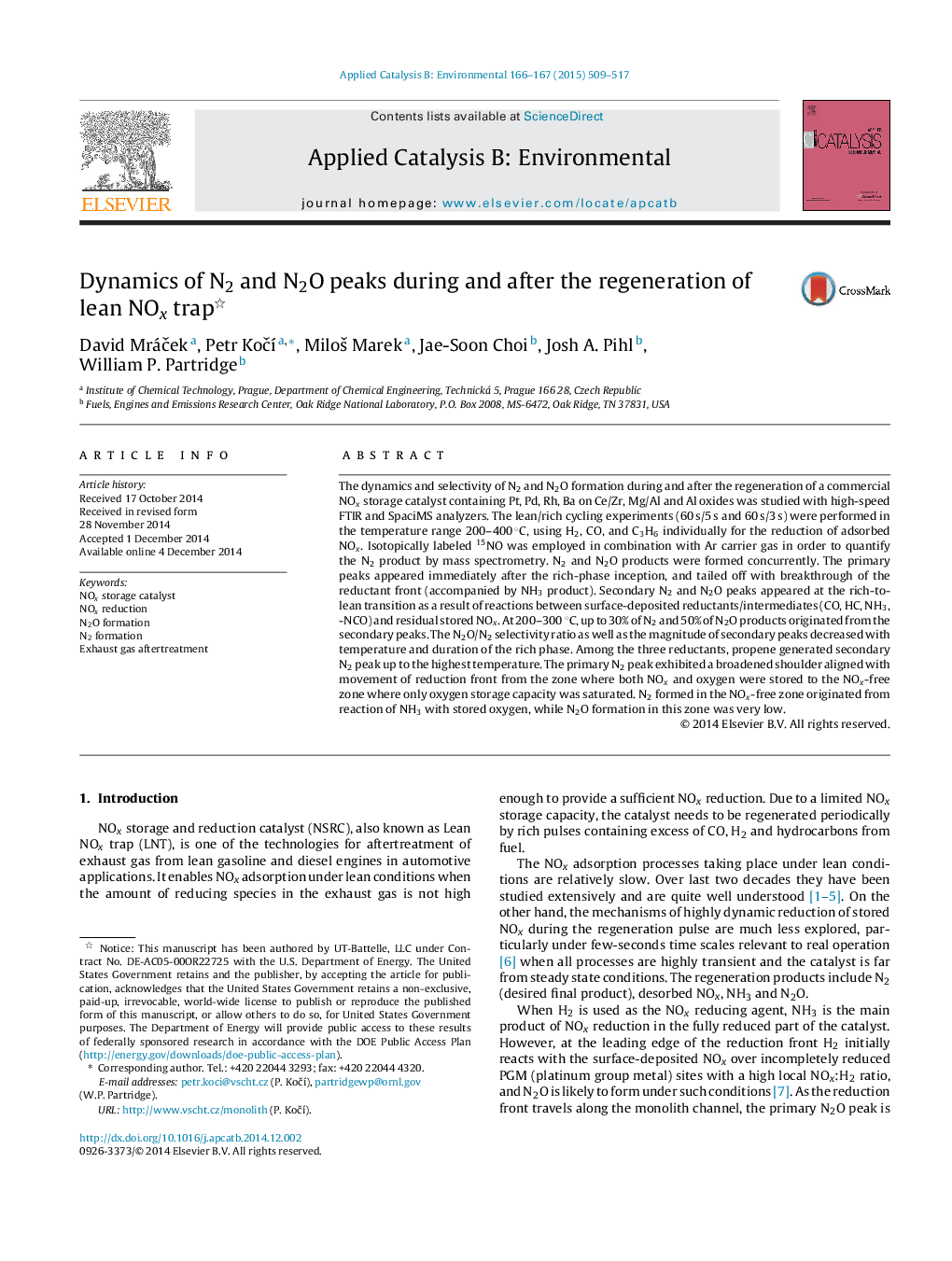| Article ID | Journal | Published Year | Pages | File Type |
|---|---|---|---|---|
| 45745 | Applied Catalysis B: Environmental | 2015 | 9 Pages |
•NOx reduction dynamics and selectivity studied in lean/rich cycling.•CO, H2 and C3H6 rich phase length varied 3–5 s, relevant to practical conditions.•Spatiotemporal distribution of N2 and N2O products measured by SpaciMS.•N2 and N2O are formed in two peaks; secondary peak after rich phase.•Up to 30% of N2 and 50% of N2O products originate from secondary peaks.
The dynamics and selectivity of N2 and N2O formation during and after the regeneration of a commercial NOx storage catalyst containing Pt, Pd, Rh, Ba on Ce/Zr, Mg/Al and Al oxides was studied with high-speed FTIR and SpaciMS analyzers. The lean/rich cycling experiments (60 s/5 s and 60 s/3 s) were performed in the temperature range 200–400 °C, using H2, CO, and C3H6 individually for the reduction of adsorbed NOx. Isotopically labeled 15NO was employed in combination with Ar carrier gas in order to quantify the N2 product by mass spectrometry. N2 and N2O products were formed concurrently. The primary peaks appeared immediately after the rich-phase inception, and tailed off with breakthrough of the reductant front (accompanied by NH3 product). Secondary N2 and N2O peaks appeared at the rich-to-lean transition as a result of reactions between surface-deposited reductants/intermediates (CO, HC, NH3, -NCO) and residual stored NOx. At 200–300 °C, up to 30% of N2 and 50% of N2O products originated from the secondary peaks. The N2O/N2 selectivity ratio as well as the magnitude of secondary peaks decreased with temperature and duration of the rich phase. Among the three reductants, propene generated secondary N2 peak up to the highest temperature. The primary N2 peak exhibited a broadened shoulder aligned with movement of reduction front from the zone where both NOx and oxygen were stored to the NOx-free zone where only oxygen storage capacity was saturated. N2 formed in the NOx-free zone originated from reaction of NH3 with stored oxygen, while N2O formation in this zone was very low.
Graphical abstractFigure optionsDownload full-size imageDownload as PowerPoint slide
